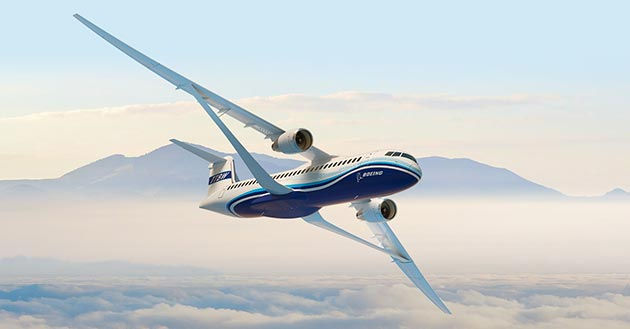Aviation: Boeing reveals thin wing concept
- The Aviation Oracle
- Jan 9, 2019
- 2 min read
Could this be the shape of airliners to come?

Boeing is studying the Transonic Truss-Braced Wing concept through a collaboration with NASA as part of the Subsonic Ultra Green Aircraft Research program. (Boeing Creative Services illustration)
Boeing has unveiled a new conceptual design study for an airliner of the future, based on a Transonic Truss-Braced Wing (TTBW). The US firm claims the ultra-thin TTBW will enable aircraft to fly higher and faster than earlier concepts based on similar technology, and will be able to operate efficiently at Mach 0.80 - a similar speed to current medium-sized airliners.
TTBW measures 170ft and has folding tips - similar to those on the forthcoming 777X - that will enable it to park at airport gates sized for the current crop of narrow-bodied airliners (current 737s have a span of 117ft). The extreme wingspan is made possible by the truss, the lower airfoil shaped bracing structure, that supports the ultra-thin airfoil.
Boeing has enhanced its previous TTBW concepts that were designed to fly a little slower - between Mach 0.70 and 0.75 - by including an optimized truss and modifying the wing sweep. These changes enable the truss to carry lift more efficiently and lead to a more integrated design that significantly improves performance.
The new configuration comes from extensive wind tunnel testing at NASA Ames Research Center. For almost a decade, Boeing and NASA have been studying the concept as part of the ten-year Subsonic Ultra Green Aircraft Research (SUGAR) program. The research focuses on innovative concepts that reduce noise and emissions while enhancing performance and improving efficiency by reducing fuel burn.

A 15% moedl of Boeing TTBW in NASA's wind tunnel. (NASA Langley / Sandie Gibbs)
Boeing continues to conduct studies that might ultimately result in the NSA (new single-aisle aircraft), which is expected to eventually replace the 737 family. It is widely thought that current airframe configurations will only yield a 3% - 5% improvement in efficiency over existing designs, and such minimal performance upgrades make the business case for developing an all new aircraft difficult to justify. High-aspect laminar wings such as the TTBW have the potential to deliver a step-change in efficiency and make the next generation narrow bodied airliners much more appealing to airlines. Airbus is also working on similar laminar flow concepts and has been testing preliminary designs on an A340 as part of its BLADE project. If this new technology is proven, airliners with radical designs might start appearing at airports toward the end of the next decade.
Text © The Aviation Oracle
